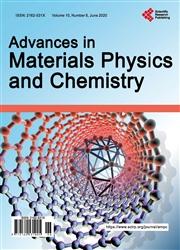The Loading Curve of Spherical Indentions Is Not a Parabola and Flat Punch Is Linear
引用次数: 3
Abstract
The purpose of this paper is the physical deduction of the loading curves for spherical and flat punch indentations, in particular as the parabola assumption for not self-similar spherical impressions appears impossible. These deductions avoid the still common first energy law violations of ISO 14577 by consideration of the work done by elastic and plastic pressure work. The hitherto generally accepted “parabolas” exponents on the depth h (“2 for cone, 3/2 for spheres, and 1 for flat punches”) are still the unchanged basis of ISO 14577 standards that also enforce the up to 3 + 8 free iteration parameters for ISO hardness and ISO elastic indentation modulus. Almost all of these common practices are now challenged by physical mathematical proof of exponent 3/2 for cones by removing the misconceptions with indentation against a projected surface (contact) area with violation of the first energy law, because the elastic and inelastic pressure work cannot be obtained from nothing. Physically correct is the impression of a volume that is coupled with pressure formation that creates elastic deformation and numerous types of plastic deformations. It follows the exponent 3/2 only for the cones/pyramids/wedges loading parabola. It appears impossible that the geometrically not self-similar sphere loading curve is an h3/2 parabola. Hertz did only deduce the touching of the sphere and Sneddon did not get a parabola for the sphere. The radius over depth ratio is not constant with the sphere. The apparently good correlation of such parabola plots at large R/h ratios and low h-values does not withstand against the deduced physical equation for the spherical indentation loading curve. Such plots are unphysical for the sphere and so tried regression results indicate data-treatments. The closed physical deduction result consists of the exponential factor h3/2 and a dimensionless correction factor that is depth dependent. The non-parabola against force plot using published data is concavely bent even for large radius/depth-ratios at the shallow indents. The capabilities of conical/pyramidal/wedged indentations are thus lost. These facts are outlined for experimental nano- and micro-indentations. Spherical indentations reveal that linear data regression is suspicious and worthless if it does not correspond with physical reality. This stresses the necessity of the straightforward deductions of the correct relations on the basis of iteration-less and fitting-less undeniable calculation rules on an undeniable basic physical understanding. The straightforward physical deduction of the flat punch indentation is therefore also presented, together with formulas for the physical indentation hardness, indentation work, and applied work for these geometrically self-similar indentations. It is exemplified with a macroindentation.球面压痕的加载曲线不是抛物线,平面冲头是线性的
本文的目的是对球形和平面冲头压痕的载荷曲线进行物理推导,特别是因为不自相似球形压痕的抛物线假设似乎是不可能的。通过考虑弹性和塑性压力功所做的功,这些扣除避免了仍然常见的违反ISO 14577的第一能源法的行为。迄今为止普遍接受的深度h上的“抛物线”指数(“圆锥为2,球体为3/2,平冲头为1”)仍然是ISO 14577标准的不变基础,该标准还强制执行ISO硬度和ISO弹性压痕模量的3+8自由迭代参数。几乎所有这些常见的实践现在都受到了圆锥指数3/2的物理数学证明的挑战,通过消除对投影表面(接触)区域的压痕的误解,违反了第一能量定律,因为弹性和非弹性压力功不能从无到有。物理上正确的是与压力形成相结合的体积的印象,压力形成产生弹性变形和多种类型的塑性变形。仅对于加载抛物线的圆锥体/棱锥体/楔体,它遵循指数3/2。几何上不自相似的球体载荷曲线似乎不可能是h3/2抛物线。赫兹只推导出了球体的接触,而斯涅登没有得到球体的抛物线。半径与深度之比与球体不是恒定的。在大R/h比和低h值下,这种抛物线图的明显良好相关性不能与推导的球形压痕载荷曲线的物理方程相抗衡。这样的图对于球体来说是非物理的,因此尝试的回归结果表明了数据处理。闭合物理推导结果由指数因子h3/2和与深度相关的无量纲校正因子组成。使用已公布数据绘制的非抛物线与力的关系图是凹入弯曲的,即使在浅凹痕处半径/深度比较大。因此失去了锥形/锥形/楔形压痕的能力。这些事实概述了实验纳米和微压痕。球形压痕表明,如果线性数据回归与物理现实不符,那么它是可疑的,毫无价值的。这强调了在无迭代的基础上直接推导正确关系的必要性,以及在不可否认的基本物理理解上拟合不可否认计算规则的必要性。因此,还提出了平面冲压压痕的直接物理推导,以及这些几何自相似压痕的物理压痕硬度、压痕功和应用功的公式。它以宏观压痕为例。
本文章由计算机程序翻译,如有差异,请以英文原文为准。
求助全文
约1分钟内获得全文
求助全文

 求助内容:
求助内容: 应助结果提醒方式:
应助结果提醒方式:


